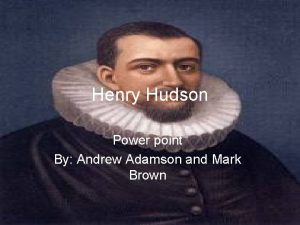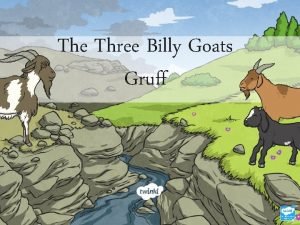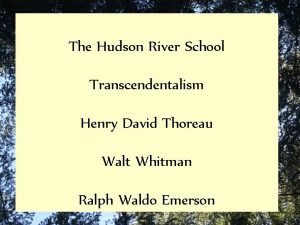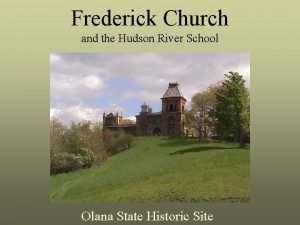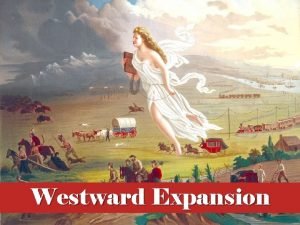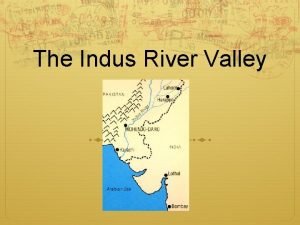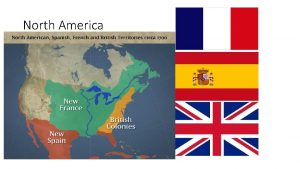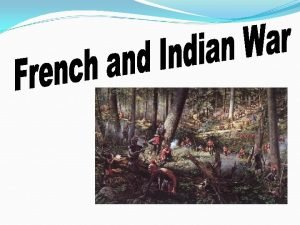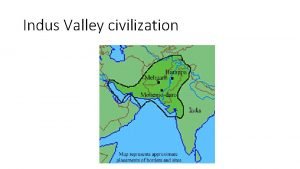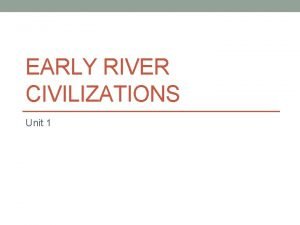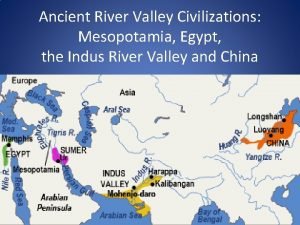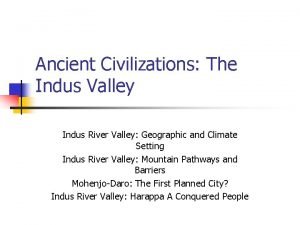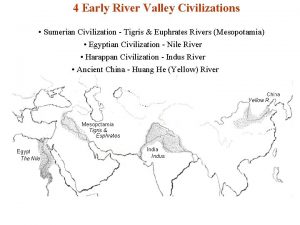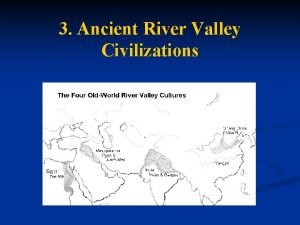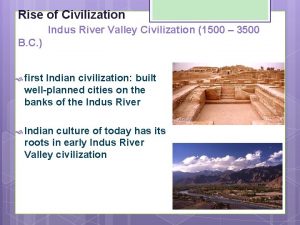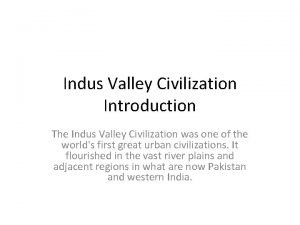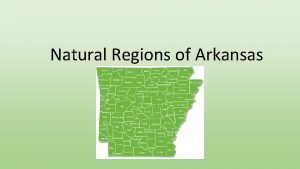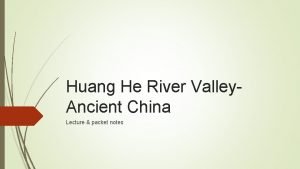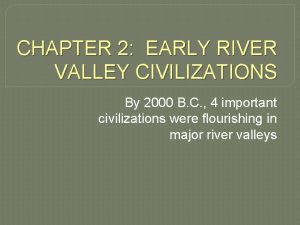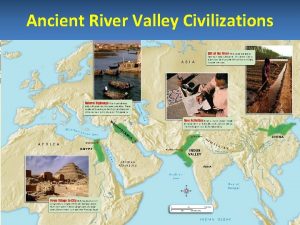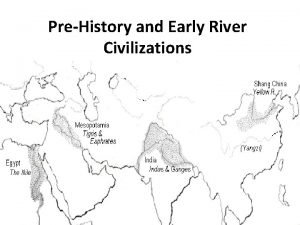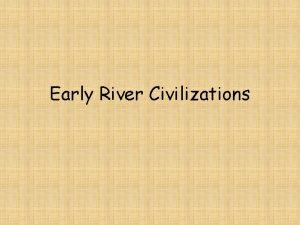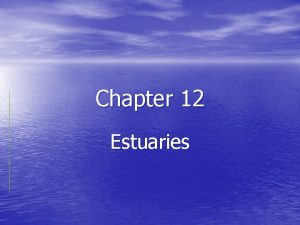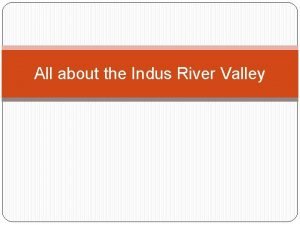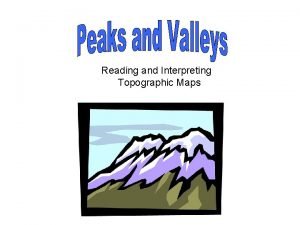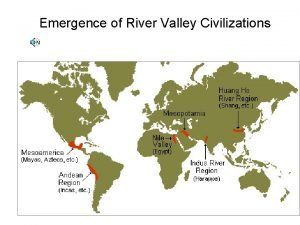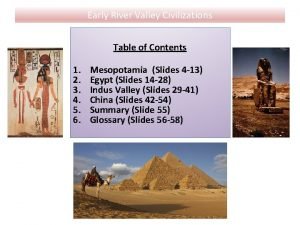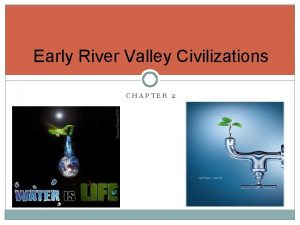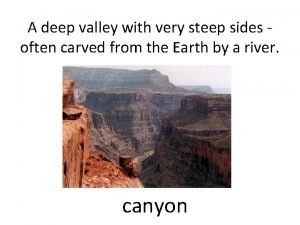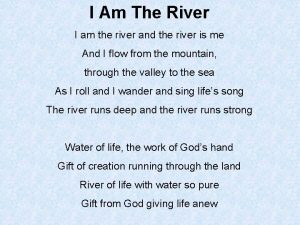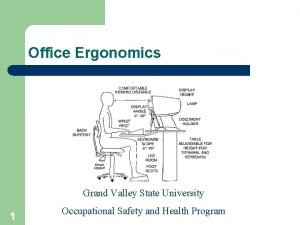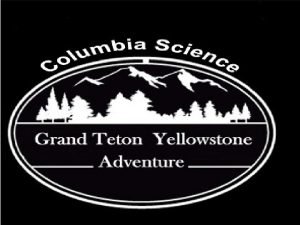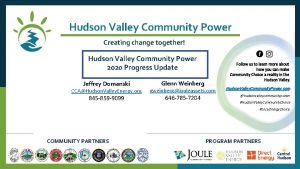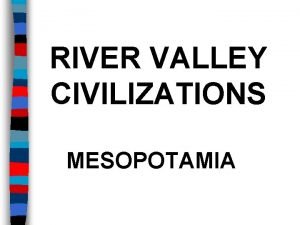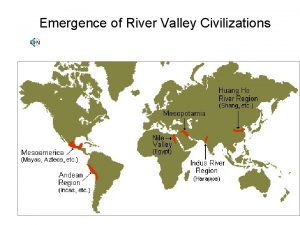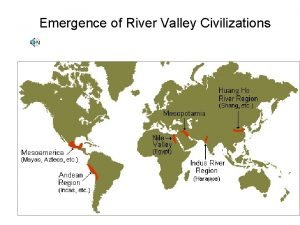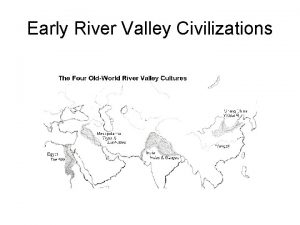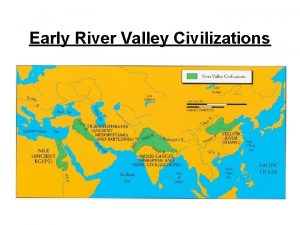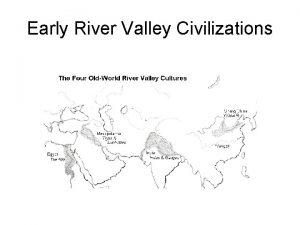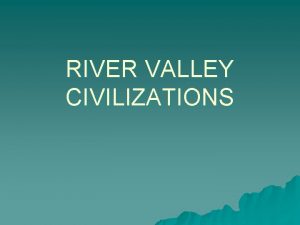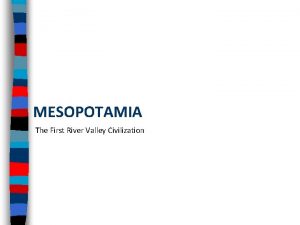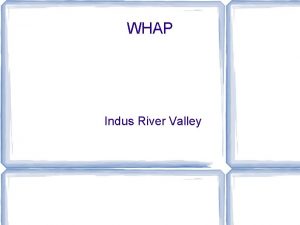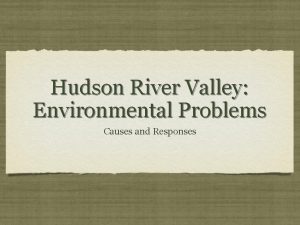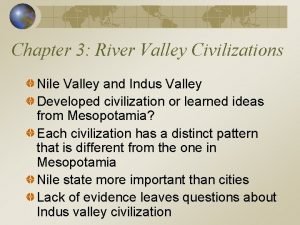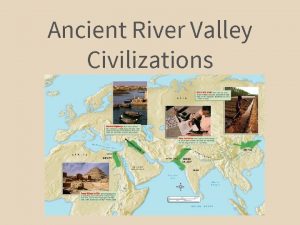The Hudson River Valley Senior University Trip May





































































































- Slides: 101

The Hudson River Valley Senior University Trip May 15 -19 See our natural resources up close! Mohonk Mountain House The big bend at West Point cliffs on Hudson River the forests. . . the rocks & river. . . the history. . . Info from Babs Cape at the travel table in the lobby

Natural Resources of North America Our World, Our Resources

Natural Resources of North America Our World, Our Resources Week 1 – Geology Creates Resources

Natural Resources of North America Week 2 – Our Forest Resources Week 1 – Geology Creates Resources

Natural Resources of North America Week 2 – Our Forest Resources Week 3 – Our Rock & Mineral Resources

Natural Resources of North America Week 4 – Our Hydrocarbon Resources Week 3 – Our Rock & Mineral Resources

Natural Resources of North America Week 4 – Our Hydrocarbon Resources Week 5 – Our Water Resources

Natural Resources of North America Week 6 – Our Resources in ‘Google’ Week 5 – Our Water Resources

Natural Resources of North America Week 2 6 – Our Forest 4 Resources Hydrocarbon Resources in ‘Google’ Resources Week 1 5 – Geology 3 Our Rock Water Creates & Mineral Resources

Natural Resources of North America Week 1 – Geology Creates Resources Week 2 – Our Forest Resources Week 3 – Our Rock & Mineral Resources Week 4 – Our Hydrocarbon Resources Week 5 – Our Water Resources Week 6 – Our Resources in ‘Google’

Definition Our Forestof. Resources a ‘Forest’ - Definition of a ‘Forest’ - Where Forests Grow - Uses of Forests - Future of Our Forests

Definition of a ‘Forest’ “any densely packed vegetation”of trees antallarea with a area highof density “usually an area with a high density of trees” trees “even underwater vegetation such as kelp forests” California. Science. Center. org

Definition of a ‘Forest’ an area with a high density of trees SOME TERMINOLOGY. . . BIOMASS: OVERSTORY: • the canopy (upper tree level) UNDERSTORY: • shrub layer • herb layer • moss layer • soil microbes

Definition of a ‘Forest’ an area with a high density of trees SOME TERMINOLOGY. . . BIOMASS: biologic material of living or recently living organisms FOREST BIOMASS: • tree trunks & canopy • shrubs, herbs, mosses • roots • decomposing detritus

Definition Where Forests of a ‘Forest’ Grow an area with a high density of trees SOME TERMINOLOGY. . . Definition of a ‘Forest’ BIOMASS: - Where Grow biologic material. Forests of living- or recently Uses of Forests living organisms Future of Our Forests FOREST BIOMASS: • tree trunks & canopy • shrubs, herbs, mosses • roots • decomposing detritus

Where Global Forests Forest Cover Grow FOREST BIOMASS per unit area is high compared to other vegetation communities forests shrubs & grasses crops & cities

Global Forest Cover Forests cover about 9. 4 % of the Earth’s surface, 30% of total land area forests shrubs & grasses forests crops & cities

Global Forest Cover Forests cover about 9. 4 % of the Earth’s surface, 30% of total land area 70 o. N 50 st Boreal Fore s 10 o. N 10 o. S Tropical forests Rainforest

Global Forest Cover FOREST BIOMES “contiguous geographic areas with similar climates” Boreal Forest Temperate Forest 10 o. N 10 o. S Tropical forests Rainforest 70 o. N 50 o. N

Global Forest Cover FOREST BIOMES “contiguous geographic areas with similar climates” Boreal Forest Temperate Forest Tropical Rainforest • similar temperature • similar precipitation (humidity) forests

Global Vegetation Forest. Types Cover FOREST Tropical BIOMES forest 160 Annual precipitation (inches) “contiguous geographic areas with similar climates” 20”-170” precip 75 o - 90 o temp t al Foresforest Bore. Temperate 10”-130” precip o temprest 75 te Fo peo -ra Tem 40 e t ra 120 l a c e i t p Boreal Forest p t s es o or inf Ra m e l ica op Tr r re r e l T 5”-75” precip o a T f o f e 40 23 o - 41 o r o B 80 0 • similar temperature • similar precipitation (humidity) 10 30 50 70 Average annual temperature (o. F) 90

Annual precipitation (inches) Vegetation Types Tropical forest 20”-170” precip 75 o - 90 o temp 160 120 Temperate forest 10”-130” precip 40 o - 75 o temp e t a r pe st Rainforest. Boreal Forest m e r e l T fo 5”-75” precip a Temperate e 40 23 Forest o - 41 o r Bo 80 l a c i p st o Tr ore f Boreal Forest 0 10 30 50 70 Average annual temperature (o. F) 90

Vegetation Boreal Forest Types X X Rainforest Temperate Forest Boreal Forest

Boreal Forest • world's largest land biome • 29% of the world's forest cover • dominant features: - large temperature range - long, cold winters

Boreal Forest Denali Highway, Alaska Al-Can Highway, British Columbia • • world's coniferous forests largest land biome - evergreen: 29% of the world's forest pine, coverspruce, & fir - deciduous: larch dominant features: • term “taiga” describesrange the more barren areas - large temperature in- northern of the biome long, coldpart winters

Boreal Forest Denali Highway, Peat bog, Alaska Newfoundland • soil • is coniferous thin & poorforests in nutrients • because of poor soil, trees have shallow roots - evergreen: pine, spruce, & fir • evergreen leaves- remain on trees 2 -20 years deciduous: larch • organic matter decomposes slowly due to cold • term “taiga” describes the more barren areas • acids from evergreen needles leach soil of nutrients in northern part of the biome • peat bogs and peatlands are widespread

Temperate Boreal Forest Temperate Forest • winters are mild • precipitation is (usually) moderate • many trees are deciduous • falling leaves rich organic soils

Temperate Forest Shore of St Lawrence, Applachian Mts, Olympic TN Quebec Nat’l Park, WA diversity of trees increases toward the Equator • winters are mild Olympic Nat’l Park, WA • temperate coniferous forest precipitation is (usually) moderate • temperate forest many treesdeciduous are deciduous • temperate mixed forest falling leaves rich organic soils • temperate rainforest (high rain/humidity)

Temperate Forest diversity of trees increases toward the Equator Olympic t Park, WA ores. Nat’l Tropical Rainf • temperate coniferous forest • temperate deciduous forest • temperate mixed forest • temperate rainforest (high rain/humidity)

Tropical Temperate Rainforest Forest Tropical Rainforest

Tropical Rainforest Monteverde Cloud Forest, Costa Rica diversity of trees increases toward the Equator • contains over 750 species of trees • contains ~ 90% of plant/animal species • covers 6% of the Earth's total land surface

Tropical Rainforest Monteverde Cloud Forest, Costa Rica diversity of trees increases toward the Equator Tropical Rainforest • contains over species of trees located near the 750 Equator: • contains ~ 90% of - little variation in plant/animal temperature species or daylight • covers 6% of the Earth's total&land - high average temperatures highsurface rainfall

Where Forests Grow 10 countries with largest forest area. . . Boreal Forest Temperate Forest Tropical Rainforest

5 10 countries with largest forest area. . . Where Forests Grow =+

5 10 countries with largest forest area. . . Where Forests Grow 53% 22%

5 10 countries with largest forest area. . . North Where American Forests Grow 22% taking a closer look

North American Forests

North American Forests Temperate Forest Boreal Forest Chaparral Grassland Desert Tundra

North American Forests Baja California Mojave Dalton Highway, Desert, CA AK SD National Grasslands, grass treeless, prairies with permafrost cold winters; subsurface hot, dry, barren surfaces shrubland with mild wet winters; hothot drysummers Temperate Forest Boreal Forest Chaparral Grassland Desert Tundra

North American Forests 19 th/20 thcentury severe logging & land clearing formation of Nat’l/State Forests & Parks Temperate Forest Boreal Forest Chaparral Grassland Desert Tundra Appalachian Forest, NC Atlantic Region Temperate Mixed Forests

North American Forests temperate rainforest Pacific Temperate Forests Temperate Forest Boreal Forest Chaparralcommercial Extensive Grassland logging has destroyed Desert 90% of some of these Tundra coniferous forests temperate coniferous Olympic Nat’l Park, WA Redwood State Pk, CA

North American Forests Can adi an Relatively stable & intact Temperate Forest Boreal Forest Chaparral Grassland Desert Tundra Bo rea l Fo res t Rocky Mtn Coniferous boreal coniferous Forests ? boreal coniferous Lake Louise, Canada

North American Forests Can adi an Pacific Temperate Forests Bo rea l Fo res t Rocky Mtn Coniferous Forests Temperate Forest Boreal Forest temperate rainforest temperate coniferous Chaparral Grassland Desert Tundra Olympic Nat’l Park, WA Redwood State Pk, CA boreal coniferous Lake Louise, Canada Atlantic Region Temperate Mixed Forests temperate mixed Appalachian Forest, NC

North American Forests Can adi an CANADA 34% forested Pacific mi 2 1, 200, 000 Temperate Forests Bo rea l Fo res t Rocky Mtn Coniferous Forests Temperate Forest Boreal Forest USA temperate rainforest temperate Chaparral 33%coniferous forestedboreal coniferous Grassland 1, 170, 000 mi 2 Desert Tundra Lake Louise, Canada Olympic Nat’l Park, WA Redwood State Pk, CA Atlantic Region Temperate Mixed Forests temperate mixed Appalachian Forest, NC

North Where American Forests Grow CANADA 34% forested 1, 200, 000 mi 2 USA 33% forested 1, 170, 000 mi 2

Where Forests Grow Two classifications forests PRIMARY (OLD-GROWTH) FOREST. . 1/3 - forest of native species - no visible indications of human activities - ecological processes have not been disturbed 2/3 - re-growth after destruction or damage SECONDARY FOREST. . . . - logging - cultivation – natural disasters - invasive species

Where Forests Grow classifications forests 10 Two countries with largest areasfor of primary forest 1/3 Brazil PRIMARY (OLD-GROWTH) FOREST. . Russian Federation Canada - forest of native species 19% - no visible Amazon indications of USA human activities 35% 12% 6% Rainforest - ecological processes have not been disturbed 66% FOREST. . . . 2/3 - re-growth after destruction or damage Boreal SECONDARY Forest - logging - cultivation – natural disasters - invasive species

Where Forests Grow classifications 10 Trends countries in withforest largest areas of primary forest C Africa Primary O Regenerated N planted Asia T I Europe N USA 6% Amazon (exc. Russia) E Rainforest What’s an “ha”? NN. America 1 HECTARE = 10, 000 meters 2 = 2 ½ acres TS Boreal Oceana. Forest S. America 0 million ha 1000

Where Forests Grow classifications 10 Trends countries in withforest largest areas of primary forest Africa Secondary Asia Europe (exc. Russia) N. America Amazon Rainforest USA Primary Regenerated planted 20 year trend Chart represents only 67% of all forests Boreal -- excludes countries which did not Oceana. Forest provide data for all three decades S. America 6%

Where Forests Grow Trends in forest classifications Africa Asia Primary Regenerated planted Europe (exc. Russia) loss of primary forests ~ 4 million hectors/year N. America Oceana S. America

Where Forests Grow Trends in forest classifications Africa Asia Europe (exc. Russia) Primary Regenerated planted loss of primary forests. . . areas of planted forests are increasing ~ 4 million hectors/year N. America Oceana S. America Here’s some good news. . .

Where Forests Grow Trends in forest classifications Africa LOSS Asia GAIN Europe (exc. Russia) . . . areas. GAIN of planted forests are increasing d ine m r e t e d e r a s d n e N. America r t MAINTAIN e s e h t w o H Oceana S. America ALL Primary FORESTS Regenerated CLASSES planted Here’s some good news. . . LOSS

Where Forests Grow Trends in forest classifications How. . . Africa these trends are determined ALL Primary Asia FORESTS Regenerated CLASSES planted . . . d e n i m r e t e d e r a s d n e N. America r t e s e h t How Europe (exc. Russia) Oceana S. America

Where Forests Grow Trends in forest classifications How these trends are determined. . . Remote Sensing Surveys Global Forest Resources Assessments - coordinated by United Nation’s Food & Agricultural Organization (FAO) - made at 5 to 10 year interval since 1945 - countries self-report forest data, FAO compiles data for regions & continents - additional 10 -year Remote Sensing Surveys begun in 1980

Where Forests Grow Trends in forest classifications How these trends are determined. . . Remote Sensing Surveys. . . an example - satellite images are collected globally - samples taken at all lat-long intersections (13, 500 total samples, 9, 000 outside deserts/ice) - sample sites are 10 km by 10 km squares (about 1% of earth’s surface) - for each sample location, images of all decades are analyzed & compared for changes in forests

Where Forests Grow Trends in forest classifications How these trends are determined. . . Remote Sensing Surveys. . . an example systematic - satellitesampling imagesgrid are collected globally - samples taken at all lat-long intersections (13, 500 total samples, 9, 000 outside deserts/ice) - sample sites are 10 km by 10 km squares South (about 1% of earth’s surface) America - for each sample location, images of all decades are analyzed & compared for changes in forests

Where Forests Grow Trends in forest classifications How these trends are determined. . . Remote Sensing Surveys. . . another example systematic sampling grid le p m a s -70 o 10 km -40 o 10 km

Where Forests Grow Trends in forest classifications How these trends are determined. . . Remote Sensing Surveys. . . another example systematic sampling grid le p m a s

Where Forests Grow 1990 not forest 1990 FO RE ST 2000 not forest ST E R FO 2000

Where Forests Grow Change in Forest Cover 1990 2000 1990 not forest 1990 FO RE ST 2000 not forest ST E R FO 2000

Where Forests Grow Global forest area ownership Change in Forest Cover 1990 2000 R West/Central Africa E G I OWorldwide NAverages: S s t s re o f d e % n 0 8 w o y l c s i t l s b e r pu o f d e % n 18 ly ow e t a priv n w o n k n u 2% isputed or d 0 % 80 18 100 2

Where Forests Grow Global forest area ownership Who owns the private forests? 98%publicly owned West/Central Africa West/Central Asia Europe, excl Russia < ½ publicly owned North America ~ 62% publicly owned

Where Forests Grow Global forest area ownership Who owns the private forests? Worldwide Averages: 59% ls , e a t u a d r i o v i rp o ind c s n % o 9 i t 1 u t i inst 59 22% us o n e g i d n i 19 22

Where Forests Grow Global forest area ownership Who owns the private forests? 80 -85% indigenous owners 70% individual 30% corporate

Where Uses. Forests of Forests Grow Global forest area ownership Who owns the private forests? - Definition of a ‘Forest’ - Where Forests Grow - Uses of of Forests - Future of Our Forests 70% individual 20% 18% 30% corporate

Uses of Forests COMMERCIAL USES: - recreation/tourism - wood for fuel, pulp, paper, lumber - non-wood products: gums, resins, dyes - employment opportunities Redwood National Forest, CA ECOLOGICAL USES:

Uses of Forests COMMERCIAL USES: - recreation/tourism - wood for fuel, pulp, paper, lumber - non-wood products: gums, resins, dyes - employment opportunities ECOLOGICAL USES: - protection of forest resources - contribution to global carbon cycle

Wood Uses & Wood of Forests Products COMMERCIAL USES: - recreation/tourism - wood for fuel, pulp, paper, lumber - non-wood products: gums, resins, dyes - employment opportunities ECOLOGICAL USES: - protection of forest resources - contribution to global carbon cycle

Wood & Wood Products Roundwood: term used to describe all types of wood cut from trees Products made from roundwood: - food enhancers - cosmetic - paint additives - rayon fabric

Wood & Wood Products Roundwood: term used to describe all BILLION types of ft 3 Global roundwood consumption*: 115. 7 wood cut from stacked end-to-end in ft 3 trees blocks: Products made from roundwood: - circle earth’s equator 880 times, or - stretch to the moon and back 45 times - food enhancers - cosmetic - paint additives 1999 - rayon *for fabric

Wood & Wood Products Global roundwood consumption*: 115. 7 BILLION ft 3 Amount of 3 energy stored in 1 kilogram stacked end-to-end in ft blocks: - circle earth’s equator 880 times, or - stretch to the moon and back 45 times k 4 k e e W n i y t i s 1/3 X n e D y g r e n E t u o ½ X b a e 3 X r o M 9 ¾X 1 developing countries Wood 18 % >>> = *for 1999

Wood & Wood Products Global roundwood consumption*: 115. 7 BILLION ft 3 USA consumption? 4 k e e W n i y t i s n e D y g 4% r e n E 32% t u o b a e r o M 9 7 1 3 developed countries % %

Wood & Wood Products Global roundwood consumption*: 115. 7 BILLION ft ft 33 3 19 ft person per year! USA consumption? s e m i 3 t 19. 7 BILLION ft /year 3½ 3 74 ft person per year How is this consumption effecting our forests? *for 1999

Wood & Wood Products How is this consumption effecting our forests? re-forestation net gain in USA offset by loss in Mexico strong re-forestation in China scale 1 mil ha ho it w n o i t esta defor g n i t n a l ut rep drought & fire net gain (million ha/yr) net loss

Wood & Wood Products How is this consumption effecting our forests? 1990 -2000: net loss of 8. 3 million ha / year net gain in USA offset by loss in Mexico 2000– 2010: scale 1 mil ha re-forestation strong re-forestation ha in/year China net loss of 5. 2 million 0. 13% of the forests / year ? ? ho it w n o i t esta efor d decrease in g reduction n i t drought & fire n a l 37% p e r ut deforestation rate net gain net loss - increase new forest planting/seeding - natural expansion of existing forests (million ha/yr)

Wood & Wood Products Uses Employment of Forests COMMERCIAL USES: How is this consumption effecting our forests? - recreation/tourism 1990 -2000: 8. 3 million - wood for net fuel, loss pulp, of paper, lumber ha / year - non-wood products: gums, resins, dyes - employment opportunities 2000– 2010: net loss of 5. 2 million ha /year 0. 13% of the forests / year ECOLOGICAL USES: 37% reduction - protection of forest resources - contribution to global carbon cycle ? ? - decrease in deforestation rate - increase new forest planting/seeding - natural expansion of existing forests

Employment 10, 537, 000 338, 000 10, 876, 000

Uses of Forests Protection Employment of Forests COMMERCIAL USES: - recreation/tourism - wood for fuel, pulp, paper, lumber - non-wood products: gums, resins, dyes - employment opportunities ECOLOGICAL USES: - protection Protection of forest Foestsresources - contribution to global carbon cycle 10, 876, 000

Protection of Forests Primary functions of Protected Forest Areas are: - conservation of biological diversity Olympic Nat’l Park, WA - conservation of wildlife Mahale Mt Nat’l Park, Tanzania - protection of water/soil resources Crocker Range, Malaysia - preservation of cultural heritage Extent of Protected Forest Areas:

Protection of Forests Primary functions of Protected Forest Areas are: - conservation of biological diversity - conservation of wildlife - protection of water/soil resources - preservation of cultural heritage Extent of Protected Forest Areas: - cover about 13% of the world’s forests - include > 10% of total forest in most countries - 3. 7% designated recreation, tourism, cultural heritage - increased by 94 million ha since 1990!

Protection of Forests Extent of Protected Forest Areas: - cover about 13% of the world’s forests - include > 10% of total forest in most countries - 3. 7% designated recreation, tourism, cultural heritage - increased by 94 million ha since 1990! A V E R A G E North America 0 10% %13% % 25

Protection of Forests Extent of Protected Forest Areas: - cover about 13% of the world’s forests Africa > 10% of total forest in most countries - include - 3. 7% designated recreation, tourism, cultural heritage Asia - increased by 94 million ha since 1990! Europe N. America North. Oceana America North America S. America 0 A V E R A G E 10% incr ease DOUBL ED! 10% 13% million ha 110

Uses of Forests Protection of Forests COMMERCIAL USES: - recreation/tourism - wood for fuel, pulp, paper, lumber Africa - non-wood products: gums, resins, dyes -Asia employment opportunities Europe ECOLOGICAL USES: - protection of forest resources N. America - contribution to global carbon cycle Oceana S. America 10% incr ease DOUBL ED!. . the next section

Future Usesofof. Our Forests COMMERCIAL USES: - recreation/tourism - wood for fuel, pulp, paper, lumber - Definition ofgums, a ‘Forest’ - non-wood products: resins, dyes - employment - Where opportunities Forests Grow - Uses of Forests ECOLOGICAL USES: - protection forest resources - Futureofof of Our Forests - contribution to global carbon cycle the next section. .

Future The ‘Carbon of Our Cycle’ Forests -The the ‘Carbon ‘carbon cycle’ Cycle’ - impact of forest biomass - looking to the future

The ‘Carbon Cycle’ - amount of carbon on earth is essentially constant - carbon is held in 4 major ‘stores’: Atmosphere as the gas carbon dioxide Biosphere as organic matter in biomass Lithosphere (earth) as rocks (limestone, chalk) & fossil fuel Ocean as dissolved carbon dioxide & aquatic biomass

The ‘Carbon Cycle’ - amount of carbon on earth is essentially constant - carbon is held in 4 major ‘stores’: Atmosphere as the gas carbon dioxide Biosphere as organic matter in biomass Lithosphere (earth) as rocks (limestone, chalk) & fossil fuel Ocean as dissolved carbon dioxide & aquatic biomass

The ‘Carbon Cycle’ CO 2 biomass organic soil matter coal, oil, gas aquatic biomass limestone CO 2

The ‘Carbon Cycle’ CO 2 Photosynthesis CO 2 biomass organic soil matter C coal, oil, gas C C aquatic biomass C C limestone C CO 2 marine deposits

The ‘Carbon Cycle’ CO 2 Photosynthesis biomass CO 2 CO CO 22 biomass aquatic organic soil matter C coal, oil, gas C C respiration & decomposition C C limestone C CO 2 marine deposits

The ‘Carbon Cycle’ CO 2 Deforestation! CO 2 CO 2 biomass ? - increases Atmospheric Carbon - decreases capacity of Biosphere Carbon Store CO 2 biomass aquatic organic soil matter C coal, oil, gas C C limestone C CO 2 marine deposits

The ‘Carbon Cycle’ CO 2 COFuels! 2 Fossil CO 2 CO 2 ? biomass - increase Atmospheric Carbon - remove carbon from Lithosphere Carbon Store CO 2 biomass aquatic organic soil matter CO 2 CO CO 2 C coal, CO 2 oil, gas 2 C C limestone C CO 2 marine deposits

The ‘Carbon Cycle’ CO 2 CO 2 >> CO 2 100 ppm above pre-industrial levels ? d n e r t < CO 2 ctaquatic i 2 sbiomass CO h t a p m i s t C CO 2 s e r <Ca. Cn fo C limestone C CO 2 biomass organic soil matter marine deposits

Impact Future of. Forest Our Cycle’ Forests Biomass The of ‘Carbon CO 2 - the ‘carbon cycle’CO 2 CO CO 2 -CO impact of Forest forest Biomass biomass Impact of CO CO 100 ppm above pre-industrial levels - looking to the future CO 2 2 2 2 ? d n e r t s i CO h t aquatic 2 biomass t c a p m i s t C CO 2 s e r o limestone f n C Ca C CO 2 biomass organic soil matter marine deposits

Impact of Forest Biomass If we eliminate deforestation, could we. . reduce carbon emissions to atmosphere? If we increase re-forestation, could we. . increase carbon uptake in biosphere? Would it make a difference? Let’s look at the numbers

Impact of Forest Biomass CARBON CYCLE Atmosphere p Irned-ui If we eliminate deforestation, nsdtrui 597 a s could we. . tl raiagl forest e f growth fluluxx 120 101 carbon reduce emissions to atmosphere? 140 244 de-forest 70 118 emissions If we increase re-forestation, Fossil Fuels Forests could 2300 0. 8 we. . 3700 increase carbon uptake in biosphere? 900 Would it make a difference? Ocean 37, 100 Let’s look at the numbers black text: pre-industrial data red text: industrial age impact Rate/flux: Gt. C (gigaton C)

Impact of Forest Biomass Atmosphere 597 - 101 + 140 Industrial age flux CARBON CYCLE + 244 - 118 Forest growth de-forest 140 101 140 de-forest growth 101 emissions 244 118 acidification Forests 118 2300 + 101 - 140 black text: pre-industrial data red text: industrial age impact Rate/flux: Gt. C (gigaton C) 244 emissions Fossil Fuels 3700 - 244 900 + 18 Ocean 37, 100+ 100

Impact of Forest Biomass 5 net increase 6 Industrial age flux Eliminating deforestation & increasing reforestation in CARBON CYCLE 1 + Atmosphere will not solve our+ Atmospheric carbon 597 - 101 140 + 244 atmospheric - 118 CO 2 problem forest > 25% We 101 need growth to look at fossil fuels! 140 244 Primary de-forest culprits are: emisions -39 118 More to co me 900 + 18 : Ocean. W e 37, 100 + 100 ek 4 emissions Forests 2300 + 101 - 140 net forest loss ~ 15% black text: pre-industrial data red text: industrial age impact Rate/flux: Gt. C (gigaton C) Fossil Fuels 3700 - 244 emissions

NEXT WEEK. . Week 3 – Our Rock & Mineral Resources

REFERENCES http: //www. map-of-north-america. us/north-america-topo-map. gif http: //www. mapresources. com/media/catalog/product/g/l/gl-nam-782294_comp_3. jpg http: //www. ecoworld. com/wp-content/uploads/2009/09/north-america-map. png http: //home. hiroshima-u. ac. jp/er/Resources/Image 1946. gif http: //aventalearning. com/courses/GEOGx-HS-A 09/a/unit 02/resources/images/Sec 2_graphics/Geo_U 2_S 2_PD/Geo_2. 2. 8_mapofpetroleum. gif http: //www. whymap. org/whymap/EN/Downloads/Continental_maps/gwrm_namerica_g. jpg? __blob=normal&v=2 http: //www. worldatlas. com/webimage/countrys/nasatelliteview. jpg http: //www. geni. org/globalenergy/library/renewable-energy-resources/north%20 america/Bioenergy/usa. jpeg http: //images. clipartlogo. com/files/images/34/348717/conceptual-tree-with-root-and-grass_f. jpg http: //i 0. wp. com/www. jewishpress. com/wp-content/uploads/2013/01/Rose-012513. jpg http: //en. wikipedia. org/wiki/Forest http: //en. wikipedia. org/wiki/Tiaga http: //en. wikipedia. org/wiki/Biome Physical Geography of the Global Environment, 2 nd Edition, by H. J. De Blij, et al; Paperback http: //www. worldbiomes. com/biomes_map. htm http: //en. wikipedia. org/wiki/Larch http: //en. wikipedia. org/wiki/Pinophyta http: //en. wikipedia. org/wiki/Temperate_forest http: //en. wikipedia. org/wiki/Appalachian_Mountains http: //en. wikipedia. org/wiki/Appalachian_orogeny http: //worldwildlife. org/ecoregions/na 0520 http: //wwf. panda. org/about_our_earth/ecoregions/ecoregion_list/ http: //www. fao. org/docrep/013/i 1757 e 00. htm UN Food & Agriculture Organization FORESTRY PAPER 163 http: //ths. sps. lane. edu/biomes/rain 3. html http: //www. destination 360. com/central-america/costa-rica-rainforest http: //www. fao. org/docrep/013/i 1757 e 00. htm http: //www. fao. org/docrep/013/i 1757 e 02. pdf http: //www. fao. org/docrep/006/ad 652 e 36. gif http: //cnx. org/content/m 41397/latest/graphics 3. jpg http: //cnx. org/content/m 41397/latest/ http: //www. mapsofworld. com/north-america/maps/north-america-map. gif http: //earthobservatory. nasa. gov/Features/Forest. Carbon/ http: //www. fao. org/forestry/32194/en/ http: //en. wikipedia. org/wiki/Forest http: //en. wikipedia. org/wiki/Taiga http: //rs. forest. wisc. edu/sites/default/files/pdfs/publications/93. PDF http: //en. wikipedia. org/wiki/Energy_density http: //en. wikipedia. org/wiki/Carbon_footprint http: //www. fao. org/docrep/013/i 1757 e 02. pdf http: //www. gfdl. noaa. gov/anthropogenic-carbon-cycle http: //www. physicalgeography. net/fundamentals/images/carboncycle. jpg http: //cbse. meritnation. com/img/editlive_lp/64/2012_02_07_12_59_41/carbon_cycle. png

Don’s email address: askthegeologist@suddenlink. net Class material is available. . . Senior University Website www. senioruniv. org Our Website www. vagabondgeology. com
 Henry hudson fun facts
Henry hudson fun facts Senior trip fundraisers
Senior trip fundraisers Trip trap trip trap over my bridge
Trip trap trip trap over my bridge Hudson river school transcendentalism
Hudson river school transcendentalism Sino ang nakatuklas ng hudson river
Sino ang nakatuklas ng hudson river Romanticism hudson river school
Romanticism hudson river school I had ____ fish and ____ chips for dinner
I had ____ fish and ____ chips for dinner Hudson river school
Hudson river school Hudson river foundation
Hudson river foundation Hudson river
Hudson river Facts about westward expansion
Facts about westward expansion Ganges river valley
Ganges river valley The albany plan of union
The albany plan of union Ohio river valley 1763
Ohio river valley 1763 Ancient river valley civilizations map
Ancient river valley civilizations map Indus river valley hinduism
Indus river valley hinduism Proto siva
Proto siva Ancient river valleys map
Ancient river valleys map River valley civilization map
River valley civilization map Harappa
Harappa River valley civilizations map
River valley civilizations map River valley civilizations definition
River valley civilizations definition Indus river valley timeline
Indus river valley timeline Indus era
Indus era Central valley pediatrics
Central valley pediatrics East river valley phoenicians and israelites technology
East river valley phoenicians and israelites technology River valley community college
River valley community college Which cultures believe in reincarnation
Which cultures believe in reincarnation Regions in arkansas
Regions in arkansas Ancient river valleys map
Ancient river valleys map Ohio valley river
Ohio valley river Chapter 2 early river valley civilizations
Chapter 2 early river valley civilizations Ancient river valley civilizations powerpoint
Ancient river valley civilizations powerpoint Indus river valley dbq
Indus river valley dbq Egypt advanced cities
Egypt advanced cities River valley civilizations map
River valley civilizations map River valley civilizations vocabulary
River valley civilizations vocabulary Tigris euphrates and nile river
Tigris euphrates and nile river River valley
River valley Drowned river estuary
Drowned river estuary River valley civilizations characteristics
River valley civilizations characteristics Indus valley gender roles
Indus valley gender roles Ohio river valley
Ohio river valley Rvps
Rvps Interpreting topographic maps
Interpreting topographic maps River valley community college nursing
River valley community college nursing Did william pitt open the ohio river valley
Did william pitt open the ohio river valley River valley pediatrics
River valley pediatrics River valley
River valley Indus river valley civilization cloze reading
Indus river valley civilization cloze reading Chapter 2 early river valley civilizations
Chapter 2 early river valley civilizations A valley that is deep and has steep sides.
A valley that is deep and has steep sides. Tukwila
Tukwila I am the river and the river is me
I am the river and the river is me Silicon valley stanford university
Silicon valley stanford university Grand valley state university occupational therapy
Grand valley state university occupational therapy Fort valley state university nursing
Fort valley state university nursing Fort valley state university dorm tour
Fort valley state university dorm tour Hci design patterns
Hci design patterns Hát kết hợp bộ gõ cơ thể
Hát kết hợp bộ gõ cơ thể Ng-html
Ng-html Bổ thể
Bổ thể Tỉ lệ cơ thể trẻ em
Tỉ lệ cơ thể trẻ em Gấu đi như thế nào
Gấu đi như thế nào Glasgow thang điểm
Glasgow thang điểm Chúa sống lại
Chúa sống lại Kể tên các môn thể thao
Kể tên các môn thể thao Thế nào là hệ số cao nhất
Thế nào là hệ số cao nhất Các châu lục và đại dương trên thế giới
Các châu lục và đại dương trên thế giới Công thức tiính động năng
Công thức tiính động năng Trời xanh đây là của chúng ta thể thơ
Trời xanh đây là của chúng ta thể thơ Cách giải mật thư tọa độ
Cách giải mật thư tọa độ Làm thế nào để 102-1=99
Làm thế nào để 102-1=99 Phản ứng thế ankan
Phản ứng thế ankan Các châu lục và đại dương trên thế giới
Các châu lục và đại dương trên thế giới Thơ thất ngôn tứ tuyệt đường luật
Thơ thất ngôn tứ tuyệt đường luật Quá trình desamine hóa có thể tạo ra
Quá trình desamine hóa có thể tạo ra Một số thể thơ truyền thống
Một số thể thơ truyền thống Cái miệng nó xinh thế chỉ nói điều hay thôi
Cái miệng nó xinh thế chỉ nói điều hay thôi Vẽ hình chiếu vuông góc của vật thể sau
Vẽ hình chiếu vuông góc của vật thể sau Nguyên nhân của sự mỏi cơ sinh 8
Nguyên nhân của sự mỏi cơ sinh 8 đặc điểm cơ thể của người tối cổ
đặc điểm cơ thể của người tối cổ Thế nào là giọng cùng tên
Thế nào là giọng cùng tên Vẽ hình chiếu đứng bằng cạnh của vật thể
Vẽ hình chiếu đứng bằng cạnh của vật thể Phối cảnh
Phối cảnh Thẻ vin
Thẻ vin đại từ thay thế
đại từ thay thế điện thế nghỉ
điện thế nghỉ Tư thế ngồi viết
Tư thế ngồi viết Diễn thế sinh thái là
Diễn thế sinh thái là Các loại đột biến cấu trúc nhiễm sắc thể
Các loại đột biến cấu trúc nhiễm sắc thể Các số nguyên tố là gì
Các số nguyên tố là gì Tư thế ngồi viết
Tư thế ngồi viết Lời thề hippocrates
Lời thề hippocrates Thiếu nhi thế giới liên hoan
Thiếu nhi thế giới liên hoan ưu thế lai là gì
ưu thế lai là gì Hươu thường đẻ mỗi lứa mấy con
Hươu thường đẻ mỗi lứa mấy con Khi nào hổ con có thể sống độc lập
Khi nào hổ con có thể sống độc lập Hệ hô hấp
Hệ hô hấp Từ ngữ thể hiện lòng nhân hậu
Từ ngữ thể hiện lòng nhân hậu Thế nào là mạng điện lắp đặt kiểu nổi
Thế nào là mạng điện lắp đặt kiểu nổi Annie hudson bristol
Annie hudson bristol
